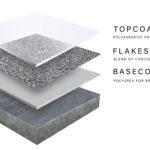
Adding a new floor coating is a great way to give your floor a fresh look and increase its durability. This will also help protect your flooring from dirt, dust, and water damage. There are many different types of coatings available, ranging from polyurethane to ceramic tile, each with its own advantages and disadvantages.
But before adding a new coating, consider these 3 aspects.
1. Where is the Flooring to be Coated?
Before adding a new coating to your flooring, one of the most critical questions you must ask is what is the location of your flooring? This is because the type of floor coating you choose and the preparation to apply it will depend on the environment of the coated area.
For example, if the flooring is in a damp area, such as a bathroom or kitchen, you will need waterproof coating. On the other hand, if the flooring is going to be in an area with a lot of foot traffic, you will need to choose a more durable type of coating, resistant to wear-and-tear.
Another example: if the flooring is in a room with a lot of sunlight, choose a coating designed to resist UV damage. If the flooring is in an area receiving a lot of moisture, choose a coating designed to resist the effects of moisture.
2. What Type of Floor is This?
The coating material will also depend on the type of floor you have.
If your floor is in concrete, consider a polyurethane sealer or a polyurea floor coating. Polyurethane sealers and polyurea coatings provide excellent protection for concrete and are highly resistant to wear-and-tear. But if you have a wood floor, a polyurethane or epoxy coating would likely be your best options. These coating materials will help protect the wood from damage while providing a glossy, attractive finish.
In addition to understanding the type of floor, your flooring contractor will assess the condition of the floor. If it is in good condition, a clear coating helping to protect it while allowing its natural beauty to shine through would be a great option.
If your floor needs repair, consider a thicker coating, i.e. an epoxy or polyurethane coating. These floor coating materials will help fill in cracks and imperfections in your floor while giving it a durable and attractive finish.
3. How Was Your Old Floor Coating Applied?
Before your flooring contractor starts putting down a new coating on a floor already coated, they will analyze the existing coating. The correctness of the application process will directly impact the longevity and performance of the new coating.
The most common types of floor coating materials are paint, epoxy, and polyurethane. The application process is different for each. The usual tools to apply Paint are a roller and brush; but to apply epoxy and polyurethane, your contractor will use a sprayer.
Your flooring contractor will also analyze the preparation work done before the existing coating was applied. For example, if the floor was not properly cleaned and prepped before the old coating was applied, this will affect how well the new coating adheres.
Final Thoughts
Laying down a new floor coating is always a great idea to protect and maintain your floor. The coating material will isolate the floor from dirt damage and spills, and help make it look better. The coating you select must fully fit the type of surface on which it will be applied.
If you’re looking for floor coatings in the Metro Detroit area, talk to the coating specialists of MotorCity Floors and Coatings at (248) 613-5888. With years of experience in the business, and a 4.9 Google reviews score, we can lay down any coating that will fit every interior and exterior style and will offer really good durability.





